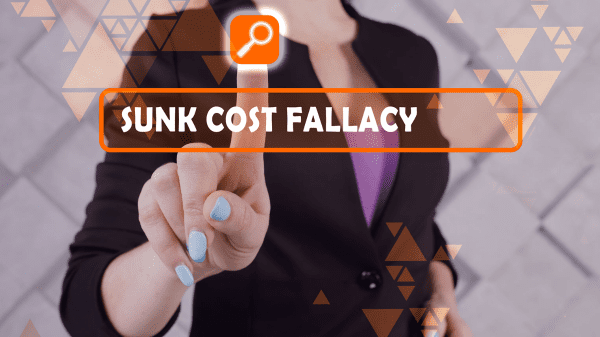The spiritual teacher G.I. Gurdjieff tells an amusing story about a Kurd who comes across some beautiful fruit in a shop. He is so taken with it that he buys a whole pound with all his money: six coppers.
On the way home, he takes out the fruit to eat. “But,” says Gurdjieff, “horror of horrors! very soon everything inside began to burn.”

A neighbor of the Kurd passes by and sees the man’s eyes streaming with tears, but in spite of this, he kept eating this beautiful fruit, which consists of red pepper pods.
“What are you doing, you Jericho jackass!” says the neighbor. “You’ll be burnt alive! Stop eating that barbarous stuff.”
“No,” the Kurd replies, “not for nothing on Earth will I stop. Didn’t I pay my last six coppers for them? Even if my soul departs from my body, I will go on eating.”
This droll tale illustrates a major fallacy in business (and in life): that of sunk costs.
Sunk costs are the money you have already put into a project and will never get back, no matter what.
But what if the project is turning out to be a fiasco?
Peter Drucker, the guru who occupies a role in modern management theory roughly parallel to that of Moses in the Jewish religion, had clear advice on this point: Just ask yourself if, knowing what you know now, you would get into this project today. If the answer is no, get out as soon as possible.
Of course, this decision is heartbreaking in proportion to the size of your investment. The unfortunate Kurd did, after all, spend his last six coppers on the beautiful fruit.
In a recent research paper, Marius Guenzel of the Wharton School of Business contends that “firms systematically fail to ignore sunk costs and that this leads to significant investment distortions.”
Guenzel observes, “When you take your first econ or finance class, the professor will always say sunk costs shouldn’t matter,” but CEOs ignore this advice—especially when, like the Kurd, they have already invested a substantial amount of their resources in the decision. How Sunk Costs Affect Firms’ Investment Decisions – Knowledge at Wharton (upenn.edu)
Guenzel points to two glaring cases of the sunk cost fallacy: the Concorde supersonic jet of the 1970s and Facebook’s recent—and obviously misguided—attempt to transform itself into Meta, which has so far cost $30 billion and led to massive layoffs. Meta announced it’s laying off more than 11,000 staff. It also said it anticipated making further big losses on metaverse projects. | Business Insider India
“They’ve spent a lot of money and now they’re throwing even more money into it,” Guenzel about the Meta venture. “But it checks all the boxes for maybe there’s some element of sunk cost here.”
Guenzel offers one suggestion: have the team that decides whether to stay in or out (aka the “divestiture decision”) be a different one from the team that decided to go in.
Another option, which seems to be the usual practice among well-managed companies: start out small, with test markets and so on, and only take your venture out on a large scale when you have some palpable evidence that it will succeed.
Savvy growers know that even if you have a new variety of fruit or vegetable that is as bewitching as the Kurd’s pepper pods, it’s just as well to try it out on acre or two, since educated guesses can never be certain how it will respond to soil, climate, or market conditions.
Falling in love can be a heartbreak. Especially when it’s with a huge investment that you’re sure can’t fail.



